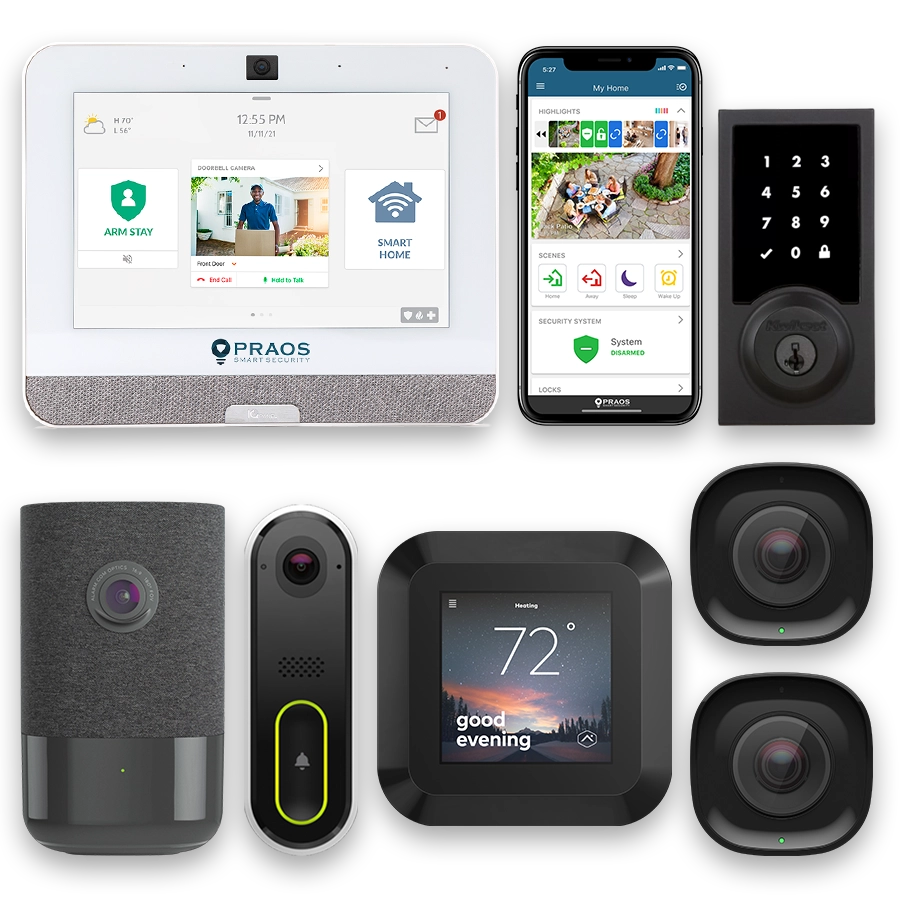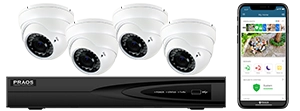- The Evolution of Residential Security Systems: A Historical Overview
- The Rise of Smart Alarm Systems: Current Trends and Technologies
- Integrating CCTV Systems into Modern Homes: Benefits and Challenges
- The Role of IoT and AI in Enhancing Home Security
- Data Privacy and Security: Addressing Concerns in Smart Home Systems
- Future Prospects: Innovations and Predictions for Residential Security
The Evolution of Residential Security Systems: A Historical Overview
The history of residential security systems is a fascinating journey of technological evolution and societal need, reflecting how homeowners’ concerns and technological innovations have brought us to today’s modern systems. Understanding this evolution provides valuable context for the current state and future of home security.
Early Mechanical Locks and Simple Alarms
Residential security began with basic mechanical technologies. The earliest locks, found in Ancient Egypt and Mesopotamia around 4000 years ago, were simple wooden devices with intricate internal mechanisms. By the 18th century, metal locks with more sophisticated designs, such as Chubb detector locks, were developed to provide greater security against tampering.
The 19th century saw the introduction of basic alarm systems. Augustus Pope patented an electromagnetic alarm system in 1853, which became a foundational technology for future developments. These early systems primarily aimed to deter intruders through noise, alerting homeowners and neighbors.
Mid-20th Century: Electronic Advancements
The mid-20th century marked a significant leap in residential security with the advent of electronic systems. In 1966, inventor Marie Van Brittan Brown developed a precursor to modern CCTV systems. Her invention included a camera that could slide into and look through four peepholes, and a television monitor for viewing, providing increased surveillance and security.
During this period, alarm systems also became more sophisticated with the introduction of wired intruder alarms and centralized monitoring services. Companies like ADT began offering residential monitoring services, which connected an alarm system to a central station via telephone lines to alert authorities in case of emergency.
The Digital Revolution and Wireless Systems
The late 20th century to early 21st century witnessed the digital revolution, profoundly impacting residential security systems. Digital technology enabled the development of more reliable and versatile security products, including motion detectors, glass break sensors, and advanced control panels.
Wireless technology further transformed home security. Wireless alarm systems, first introduced in the 1980s, allowed for easier installation and greater flexibility in system design and placement. These systems connected via radio frequencies, eliminating the need for extensive wiring.
Current State: Smart Homes and Integrated Systems
Today, residential security systems are characterized by smart technology and integration. Modern systems combine alarms, surveillance cameras, doorbell cameras, and smart locks, all of which can be controlled and monitored via smartphones and other devices. Companies like Ring, Nest, and SimpliSafe have popularized DIY smart security solutions that are easily accessible to a broad audience.
Moreover, advancements in Internet of Things (IoT) and artificial intelligence (AI) have enhanced the capabilities of these systems. AI-powered features, such as facial recognition and anomaly detection, provide more precise and proactive security measures.
This historical overview underscores the continuous innovation in residential security, setting the stage for future advancements and integrations that promise to offer even more comprehensive and intelligent home protection.
The Rise of Smart Alarm Systems: Current Trends and Technologies
The rise of smart alarm systems has fundamentally changed the landscape of residential security, leveraging advanced technologies to offer homeowners comprehensive and efficient protective solutions. At the forefront of this evolution is Praos, a company distinguished by its unwavering commitment to ensuring the safety of families and homes. With years of local expertise in the Richmond area and a celebrated track record for service excellence, Praos is a leading figure in the home security industry.
One of the most notable trends in current smart alarm system technologies is the integration of these systems with other home automation solutions. Praos exemplifies this trend by offering a truly connected home experience. Their approach involves a single, unified app that manages security, automation, and surveillance, providing homeowners with seamless control over their home environment. This integration not only enhances the user experience but also ensures a higher level of coordinated security measures.
Smart alarm systems today are equipped with features that were unimaginable a decade ago. These include remote monitoring, real-time alerts, and advanced sensor technologies. For instance, Praos offers monitored new system plans wherein new customers receive free equipment and free installation. This makes high-end security solutions more accessible to a broader audience, ensuring that more homes can benefit from state-of-the-art protection without incurring prohibitive costs.
Customization is another significant trend in the smart alarm system market. Understanding that every home has unique security needs, Praos works closely with customers to tailor a smart home system that fits their specific requirements and budget. This personalized approach not only optimizes the security setup but also enhances user satisfaction by providing solutions that are directly aligned with individual needs.
Cost is always a consideration for homeowners, and in this regard, Praos stands out with its competitive pricing model. Rates start at just $19.95 per month, making sophisticated home security systems affordable for a wide range of households. This pricing strategy underscores Praos’s dedication to making high-quality security accessible to everyone.
The convenience of remote access cannot be overstated in the context of modern smart alarm systems. Praos’s systems allow homeowners to monitor and control their security setup from anywhere, providing peace of mind whether they are at work, on vacation, or simply away for the evening. This capability is facilitated through their comprehensive app, which ensures that users are always connected to their home environment.
In summary, the rise of smart alarm systems, exemplified by companies like Praos, is characterized by advanced technology integration, customizable solutions, affordability, and ease of use. These trends are setting new standards in residential security, providing homeowners with robust and adaptable protection for their homes and families.
Integrating CCTV Systems into Modern Homes: Benefits and Challenges
The integration of CCTV systems into modern homes offers several distinct benefits and presents some challenges that need to be addressed. These systems have evolved to provide more robust and comprehensive coverage, supporting the overarching goal of enhanced residential security.
Benefits of Integrating CCTV Systems:
CCTV systems contribute significantly to the security landscape of modern homes by providing continuous monitoring and recording of activities, both inside and outside the property.
- Deterrence of Criminal Activity: Visible CCTV cameras can act as a deterrent to potential intruders, as the presence of cameras raises the likelihood of being caught and identified.
- Evidence Collection: In the event of a security breach, CCTV footage can provide critical evidence for law enforcement agencies, aiding in the identification of suspects and the recovery of stolen property.
- Remote Monitoring: Modern CCTV systems often come with the capability of being monitored remotely through smartphones or computers, allowing homeowners to keep an eye on their property from virtually anywhere.
- Integration with Other Smart Systems: Many modern CCTV systems can be integrated with other smart home devices, such as smart alarms and lighting systems, to create a coordinated and responsive security environment.
Challenges of Integrating CCTV Systems:
While the benefits are clear, implementing CCTV systems in residential settings comes with its own set of challenges that must be navigated carefully.
- Privacy Concerns: Balancing effective surveillance with respect for personal privacy is a significant issue. Homeowners must consider the implications of filming their private spaces, especially in areas where family members expect a high degree of privacy.
- Data Security: The storage and transmission of video footage can present vulnerabilities. Ensuring that this data is encrypted and securely stored is crucial to prevent unauthorized access.
- Cost: The initial installation and ongoing maintenance of a comprehensive CCTV system can be costly. Homeowners need to weigh the investment against the potential benefits to determine feasibility.
- Technical Integration: Integrating CCTV systems with existing smart home devices can be technically complex. Compatibility issues between different brands and technologies can pose difficulties, requiring careful planning and potential involvement of professional installers.
The future of residential security undoubtedly involves the sophisticated use of CCTV systems alongside smart alarm technologies. By addressing the challenges and capitalizing on the benefits, homeowners can create a more secure living environment that leverages the latest advancements in surveillance technology.
The Role of IoT and AI in Enhancing Home Security
The Internet of Things (IoT) and Artificial Intelligence (AI) are playing an increasingly critical role in enhancing home security. By converging these advanced technologies, modern residential security systems can offer more comprehensive, real-time, and automated protection than ever before.
IoT in Home Security
IoT-enabled devices are transforming the residential security landscape by enabling seamless communication between various security components. Such devices include smart locks, sensors, and lighting systems, all of which can be controlled remotely via smartphones or integrated home automation systems.
Key components of IoT in home security include:
- Smart Sensors: Detecting motion, sound, temperature changes, and even gas leaks.
- Connected Cameras: Streaming live footage to mobile devices and cloud storage for later review.
- Smart Locks: Enabling remote locking or unlocking, thereby reducing the risk of unauthorized entry.
AI in Home Security
AI enhances the capabilities of home security systems by adding intelligent analysis and decision-making features. AI-driven systems can process and interpret data from various sensors and cameras to identify potential threats more accurately and reduce false alarms.
Common AI applications in home security include:
- Facial Recognition: Identifying family members versus intruders.
- Behavioral Analysis: Detecting unusual activity patterns that may signify security breaches.
- Automated Alerts: Sending notifications or triggering alarms based on intelligent threat evaluation.
Impact of IoT and AI Integration
Integrating IoT and AI creates a robust and dynamic home security environment. Such systems learn from user behavior, adapt to changing conditions, and provide proactive security measures.
Consider the following benefits of this integration:
- Enhanced threat detection and reduction of false alarms.
- Automated responses to security breaches, such as locking doors or alerting authorities.
- Convenient and remote management of home security components through unified platforms.
Challenges and Considerations
Despite the benefits, there are challenges associated with integrating IoT and AI into home security systems. These include:
- Ensuring the cybersecurity of interconnected devices to prevent hacking.
- Maintaining user privacy with extensive data collection and storage.
- Managing the complexity and interoperability of multiple smart devices.
As technology advances, ongoing efforts to address these challenges will be crucial for the sustainable development of smart residential security systems.
Table of Key IoT and AI Elements in Home Security
| Component | Description |
|---|---|
| Smart Sensors | Detects various environmental changes and potential threats. |
| Connected Cameras | Provides live and recorded video footage of the premises. |
| Smart Locks | Allows for remote access control and monitoring of entry points. |
| Facial Recognition | Identifies individuals to differentiate between authorized and unauthorized access. |
| Behavioral Analysis | Monitors activity patterns to detect anomalies and potential security threats. |
| Automated Alerts | Sends notifications or triggers alarms based on intelligent threat assessments. |
Data Privacy and Security: Addressing Concerns in Smart Home Systems
With the increasing integration of smart technologies in home security systems, data privacy and security have become critical concerns for homeowners. As these systems collect and transmit vast amounts of data, they potentially expose sensitive information to unauthorized access and cyber threats. Understanding and addressing these concerns is essential for ensuring comprehensive and secure home protection.
The primary concern for users of smart alarm and CCTV systems is the potential for data breaches. According to a report by the Cybersecurity & Infrastructure Security Agency (CISA), a significant number of cyber incidents in recent years have involved exploitation of vulnerabilities in smart home devices. These breaches can lead to unauthorized access to live video feeds, tampering with alarm settings, and even gaining control over other connected devices.
To mitigate these risks, encryption is a fundamental measure. Encryption ensures that data transmitted between devices and central monitoring systems is secure and can only be accessed by authorized parties. For instance, the use of Advanced Encryption Standard (AES) provides a high level of security for data in transit and at rest in smart home systems.
Another critical aspect is the implementation of strong authentication mechanisms. This includes multifactor authentication (MFA) that requires users to provide two or more verification factors to access their systems. According to a study by Symantec, MFA can prevent up to 99.9% of account compromise attacks, significantly enhancing the security of smart home ecosystems.
Device manufacturers and service providers also play a vital role in ensuring data privacy and security. Regular software updates and patch management are essential to address known vulnerabilities and protect devices from emerging threats. The Federal Trade Commission (FTC) recommends that users frequently update their devices’ firmware and software to the latest versions to benefit from improved security features.
Moreover, users can take several proactive measures to enhance their systems’ security. These include changing default passwords to strong, unique passwords, disabling unnecessary features that might open up security gaps, and regularly reviewing account access logs to detect suspicious activities. According to Consumer Reports, routinely changing passwords and configuring settings can reduce the risk of unauthorized access to smart home devices.
Despite these measures, privacy concerns remain regarding the collection and use of personal data by smart home systems. Regulatory frameworks such as the General Data Protection Regulation (GDPR) in Europe and the California Consumer Privacy Act (CCPA) in the United States aim to provide individuals with more control over their data, requiring transparency from companies about how data is collected, used, and shared.
In conclusion, addressing data privacy and security in smart home systems requires a multi-faceted approach involving robust encryption, strong authentication, regular updates, and proactive user practices. By adhering to these principles and leveraging regulatory protections, homeowners can enjoy the benefits of advanced residential security technologies while mitigating risks associated with data breaches and privacy violations.
Future Prospects: Innovations and Predictions for Residential Security
As technology continues to advance, the future of residential security systems holds promising innovations aimed at creating safer and smarter homes. Emerging technologies and trends suggest a shift towards more integrated, efficient, and intelligent security solutions.
One of the most significant future prospects is the incorporation of Artificial Intelligence (AI) and Machine Learning (ML) algorithms into residential security systems. These technologies have the potential to enhance the capabilities of alarm and CCTV systems by enabling real-time threat detection and reducing the incidence of false alarms.
An AI-powered security system can analyze vast amounts of data collected from different sensors and cameras installed around a residence. By learning the regular patterns of occupants’ behavior, these systems can distinguish between routine activities and potential security breaches. For example, if an unknown person loiters near a building for an unusually extended period, the AI system can alert homeowners and security services promptly.
Furthermore, advances in biometric authentication are expected to play a vital role in future residential security. Biometric technologies such as facial recognition, fingerprint scanning, and voice recognition offer higher accuracy in identifying individuals and granting access to authorized persons only.
Another innovation in the pipeline is the deployment of next-gen sensor technologies. These include enhancements in motion detectors, thermal cameras, and environmental sensors that can offer more comprehensive security coverage. Coupled with AI, these sensors can provide precise and timely alerts, ensuring proactive threat management.
Additionally, the integration of blockchain technology into security systems can ensure data integrity and privacy. Blockchain can create secure, immutable records of all security events, making it challenging for intruders to tamper with logs or disable security systems.
The growth in the adoption of smart home ecosystems also suggests that future security systems will be more interconnected. Interoperability between varying smart appliances and security devices through unified platforms can provide seamless control for homeowners. Companies are continuously working on developing and standardizing protocols like Zigbee, Z-Wave, and Matter to improve device compatibility and communication.
| Innovation | Impact on Residential Security |
|---|---|
| AI and ML Algorithms | Enhanced threat detection and reduced false alarms |
| Biometrics | Accurate identification and access control |
| Next-gen Sensors | Comprehensive coverage and proactive threat management |
| Blockchain | Increased data integrity and privacy |
| Smart Home Ecosystems | Seamless control and improved device interoperability |
Looking ahead, the combination of these advanced technologies is projected to redefine residential security landscapes. Homeowners can anticipate more robust, efficient, and responsive security systems that adapt to their unique needs and work proactively to ensure safety and peace of mind.





